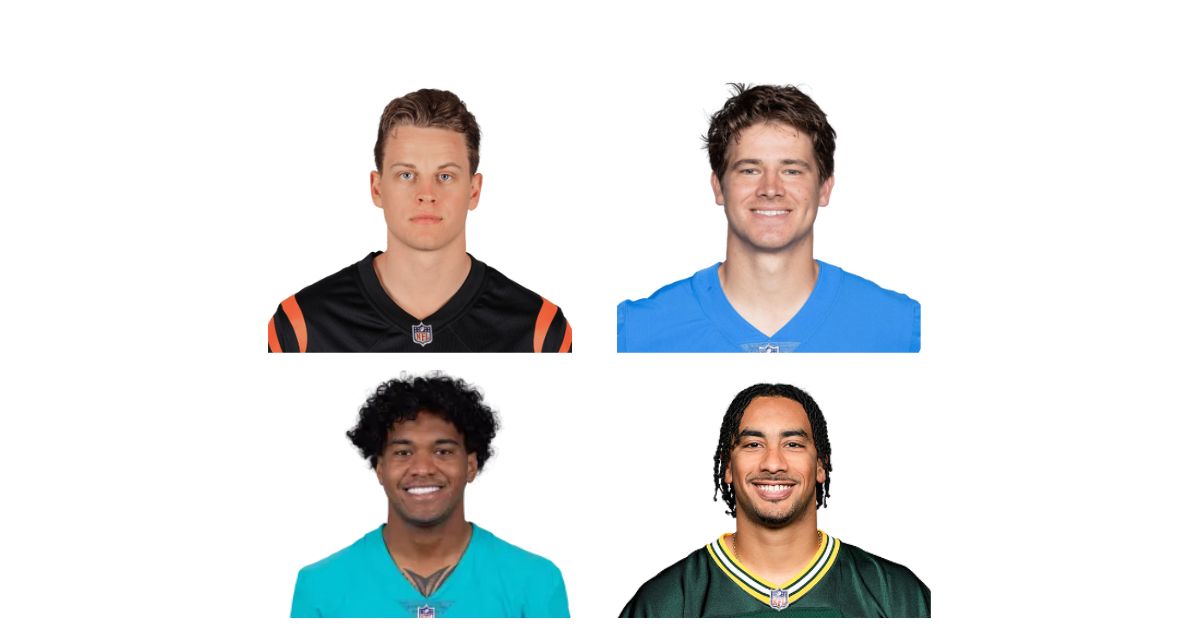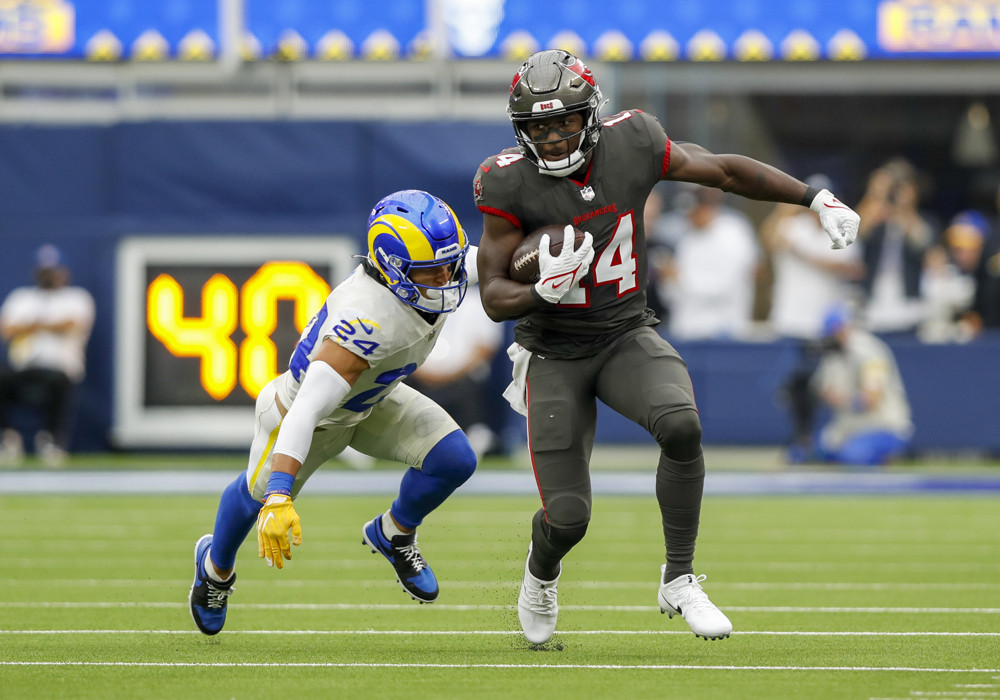By JOHN SHIRLEY
The NFL Draft wrapped on Saturday, leaving most fans with a feeling of hope and optimism for the upcoming season. Unfortunately this doesn’t apply to Packers fans, who were left wondering what their team was thinking throughout the three-day process.
The Packers left their fan base speechless on the Draft’s opening night by trading up in the first round for quarterback–and future Aaron Rodgers replacement–Jordan Love. Then they continued to torture fans who desperately begged for a receiver by taking an old school power back and a lowly rated H-Back in the second and third rounds, respectively. The later rounds were not well received either, as the team took an injured linebacker, a trio of offensive linemen, two seventh-round defenders, and continued to ignore fans’ pleas for any receiving help in what could be the deepest receiver draft in memory.
This resulted in the team receiving negative grades from most outlets, such as NFL.com, CBS Sports, For The Win, and Touchdown Wire. Sports Info Solutions’ own Football Rookie Handbook disagreed with the Packers draft the most among all 32 teams.
If all of these sources have unanimously panned the Packers draft haul, what exactly should fans be optimistic about?
The Packers might have caught lightning in a bottle, again.
Barring an injury to Rodgers, we won’t know much about the Jordan Love selection for at least two years. That is the earliest the Packers could get out of Rodgers’ contract, but they have stated they hope he continues to be a Packer. Love will have to sit and wait, which should help him after a rocky junior season.
The Good (2018) and The Bad (2019) of Jordan Love
| Metric | Jordan Love (2018) | Jordan Love (2019) |
| Comp% | 64% | 62% |
| Catchable% | 81% | 78% |
| Yds/Att | 8.5 | 7.2 |
| Yds/Dropback | 8.1 | 6.6 |
| EPA/Att | 0.27 | 0.01 |
| EPA/Dropback | 0.22 | -0.04 |
| EPA/Att (Clean Pocket) | 0.34 | 0.10 |
| EPA/Att (Deep Throws) | 3.00 | 2.62 |
If, after a few years watching and learning, the Packers can get more of 2018 Love than 2019 Love, they might have just captured lightning in a bottle for a third time and provided themselves good-to-great QB play from 1992 to 10-plus years in the future. Part of that process might be asking Love to be a little more conservative, as he rated as the most aggressive QB in this draft class by ADoT +/- (Average Distance of Target Above Expectations).
Of course that is all a best case scenario for the Packers, and Love is a boom-or-bust type player. But, based on college metrics that have shown stability between college and the NFL (mainly Accuracy, Downfield Aggression, and Propensity to Scramble), Love’s junior season compares most similar to Sam Darnold.
The drafted offensive weapons make more sense than fans think.
Fans clamored for receivers, and instead the Packers drafted a running back and a tight end. Both A.J. Dillon and Josiah Deguara were probably drafted a round or two early, so the value of the selections has rightfully been criticized. But, ignoring the round/positional value for a second, because the picks are in and there’s no going back now, these two selections do make some sense for the Packers offense.
The Packers top two running backs, Aaron Jones and Jamaal Williams, both have expiring contracts at the end of this season. The Packers also have a handful of other expiring contracts that should take priority over the running back position. So, drafting another back to take some of the load in 2020 and most likely a larger role in the future makes some sense.
Dillon is also a solid player, who produced for Boston College despite being run into loaded boxes on an incredibly high 44% of his carries. For perspective, Clyde Edwards-Helaire ran into a heavy box on only 12% of his carries, J.K. Dobbins 10%, Cam Akers 13%, D’Andre Swift 21%, and Jonathan Taylor 20%. And of these other highly-rated backs, only Edwards-Helaire and Swift join Dillon in having a Positive% (Percent of Carries w/ a Positive EPA) on the majority of both inside runs and outside runs. Dillon had a Positive% of 53% on both.
As for Deguara, one just has to look at head coach Matt LaFleur’s past to see the plan for him. The comparisons have already been made between Deguara and how LaFleur’s former boss, Kyle Shanahan, has used Kyle Juszczyk, and that is definitely an intriguing comparison for the versatile tight end. Over the past two seasons, Deguara aligned in the slot on 36% of his snaps and also lined up in the backfield a handful of plays.
LaFleur’s tenure as the Titans OC also offers a glimpse of how the Packers will be aligning on offense in 2020. In 2018, LaFleur’s offense used two or more tight ends on 41% of their snaps, which ranked third-highest in the league. In contrast the 2019 Packers only used two or more tight ends on 27% of their snaps. With versatile tight ends Jace Sternberger, Robert Tonyan, Marcedes Lewis, and now Deguara on the roster, look for the 2020 Packers to heavily use two tight end sets, which LaFleur seems to favor.
They created offensive line depth for the future
Similar to the running back situation, this draft class provides the Packers with depth this season and insurance policies against expiring contracts in the future. Guard Lane Taylor’s contract expires after this season, and could be a cap casualty sooner than that. Starting center Corey Linsley’s contract is also up at the end of 2020.
One of the interior line spots should be locked down for years by Elgton Jenkins, but the two spots could be open in 2021. With Taylor and Linsley’s expiring contracts and Billy Turner’s spotty performance–he rated as the team’s worst starting offensive lineman in 2019 by our player value metric, Total Points–it makes sense for the Packers to load up on depth in the draft.
Jon Runyan rated as SIS’s 17th-rated tackle prospect, but the Packers are most likely moving him to guard. He provided solid value for Michigan last season with 33 Total Points, and his 0.04 Total Points/Snap ranked 34th in the country among all lineman with at least 500 snaps (essentially those who played regularly or semi-regularly). Jake Hanson was a longtime starter for Oregon and finished 2019 with 24 Total Points. Simon Stepaniak finished 2019 with 22 Total Points for Indiana.
The elephant in the room: the need at WR
In SIS’s season review of the Packers, it was mentioned that they needed to improve their receiving corps if they want to contend in 2020. They are now banking on that improvement to come from within or from free agent acquisition Devin Funchess. It also looks like No.1 receiver Davante Adams will again see a large workload. He has been targeted on 27% of passing snaps he was on the field for over the past two seasons, the third highest rate in the NFL behind only Michael Thomas and Julio Jones.
Although fans desperately wanted the Packers to draft multiple receivers, this plan never fully made sense for their roster. They usually keep six receivers on their roster and based on contracts and potential, five of those spots have already been locked up for the most part.
Adams is clearly not going anywhere, Funchess was signed for a reason, third year pros Equanimeous St. Brown and Marquez Valdes-Scantling have shown promise, and former undrafted free agent Allen Lazard showed he belonged by being the team’s second-best receiver last year. That only leaves a single open spot for Jake Kumerow, Darrius Shepherd, another free agent veteran, or a rookie.
The two most intriguing options for internal improvement are St. Brown, who showed promise his rookie season before missing all of 2019 with an injury, and Lazard, who stepped up late last season after being on the practice squad in September. Both of these players have shown flashes of being able to take over the No. 2 role next to Adams.
In 2018 with St. Brown on the field, the Packers averaged 1.1 yards more per pass attempt and 5 more Expected Points Per 60 Plays than when he was off the field. In 2019, the Packers showed similar improvement when Lazard was on the field, averaging 1 yard more per pass attempt and 5 more Expected Points Per 60 Plays than when he was off the field.
Aaron Rodgers should be happy with the potential to get both of these young receivers on the field together, as he has performed much better with either one of them over the last two seasons.
Rodgers Performance w/ and w/o St. Brown or Lazard on the Field
(2018-2019 Regular Seasons)
| St. Brown & Lazard | Att | Comp% | Yds/Att | TD / INT | EPA/Att |
| Both Off Field | 691 | 61.2% | 6.9 | 26 / 6 | 0.14 |
| St. Brown On Field | 211 | 64.0% | 8.2 | 8 / 0 | 0.29 |
| Lazard On Field | 261 | 64.0% | 7.6 | 16 / 0 | 0.26 |
Final Word
Is it disappointing that the Packers didn’t add a single receiver from a historically deep draft class? Should they have waited to draft a running back until a later round? Did they reach on an H-back? Do they deserve some of the criticism currently circulating the internet? The answer to all of these questions is: Yes.
However, there does seem to be a specific plan in place with this draft class, even if that plan is wildly different from fan’s expectations. The plan is to tailor the offense to LeFleur’s liking, give the roster much needed flexibility over the next few years as contracts start expiring, focus on internal development of WRs, and hope Love follows in his predecessor’s footsteps as the next great Packer quarterback. It might not seem like it at the moment, but in two to three years this plan could look a lot better than it does now.


